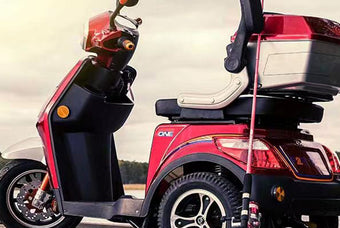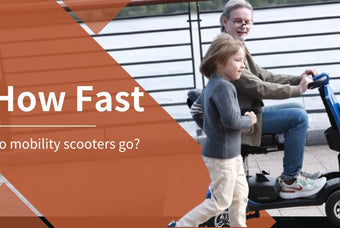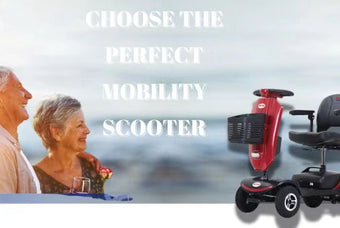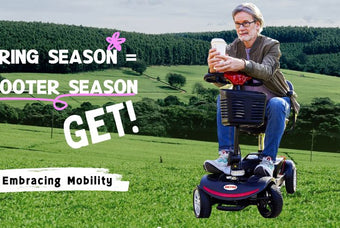
Mobility scooters are rapidly gaining popularity as a versatile aid.
They are suitable for riding on bustling city streets as well as rugged outdoor trails.
Known for their independence, portability, and sustainability, electric mobility scooters are perfect for improving the quality of life for people with mobility issues.
However, a question often asked by potential mobility scooter owners is: how fast do mobility scooters go?
Legal speed limits for electric mobility scooters
Mobility scooters are a legal type of vehicle for the DVLA.
There is no uniform speed limit for electric mobility scooters in the United States. Most electric scooters typically travel at speeds of 4 to 8 miles per hour to ensure the safety of riders and pedestrians.
Laws can vary greatly from jurisdiction to jurisdiction. Electric scooter users need to familiarize themselves with local regulations regarding the use of these vehicles, including speed limits.
Types of electric mobility scooters and their speeds
Due to the different types of mobility scooters, speeds, and operating ranges vary.
3-wheel and 4-wheel travel scooters: these compact models are easy to transport, have high stability and range, and generally reach speeds of up to 4.97mph.
Heavy-duty scooters: Designed for long distances and high speeds, these scooters can reach speeds of up to 8mph~9.3mph thanks to their more powerful motors.
However, users must pay attention to local speed limits to ensure the legal operation of the scooters.
Factors affecting mobility scooter speed
While mobility scooters are capable of reaching the maximum speeds specified in their specifications under ideal conditions, they don't always reach those speeds.
A variety of factors can affect the speed of a mobility scooter, including the motor, battery life, weight capacity, terrain, zone rules, and weather.
If you want to use your mobility scooter efficiently, you must consider the following factors.
1. Motor power
How fast is an electric mobility scooter? First, you must determine the motor used in the electric mobility scooter.
Mobility scooters with more powerful motors are faster than those with less powerful motors. Therefore, if you want to increase the speed of your mobility scooter, you may want to consider a more powerful motor.
2. Battery capacity
One of the most critical factors affecting the speed of a mobility scooter is battery life.
The battery is the heart of the electric mobility scooter and it powers the motor. Therefore, it is vital to ensure that the battery is fully charged before using your electric mobility scooter.
In addition, using a high-performance battery with a higher capacity can help increase the speed of your mobility scooter.
3. Weight capacity
Speed is also affected by the weight capacity of the mobility scooter. Mobility scooters with higher weight capacity tend to come with larger motors and batteries, which help increase speed.
If the electric mobility scooter rider has some extra groceries, heavy equipment, etc., these things can also reduce the speed of the electric mobility scooter.
4. Terrain type
Specific road surfaces and area terrain can also affect the speed of a motorized mobility scooter.
Generally, a mobility scooter is not as fast on rough and uneven terrain as it is on smooth and flat surfaces.
Therefore, you must ensure that you drive at a lower speed when driving your electric mobility scooter on rough and gravel roads.
If you are looking for an electric mobility scooter for outdoor use, consider a heavy-duty mobility scooter with all-terrain tires.
5. Regional regulations
It is vital to know the speed limits in different areas. This is because different areas may have different speed limit regulations.
When a user is fully aware of the speed limits in his area, he can drive safely without hurting himself or others.
6. Weather conditions
Extreme temperatures, both hot and cold, can affect the performance of mobility scooter batteries.
At lower temperatures, the battery may lose some of its charge, reducing the mobility scooter's range and speed.
Similarly, in very hot temperatures, the battery may overheat, resulting in reduced efficiency and possibly slower speeds.
Weather conditions such as heavy rain, fog, or snow can affect visibility and require mobility scooter drivers to reduce speed for safety reasons.
While electric mobility scooters are generally designed to cope with a wide range of weather conditions, extreme conditions can still affect their performance and speed.
Users should have reduced the number of trips they make in the face of adverse weather conditions.
7. Tire pressure and type
The pressure in an electric scooter's tires affects its speed. Low-pressure tires create more friction, making it harder for the scooter to reach top speed.
Conversely, high-pressure tires reduce friction, allowing the scooter to reach higher speeds.
Additionally, larger tires tend to provide better traction, which increases the speed of the scooter.
In Conclusion
Mobility scooters offer significant benefits for people with mobility issues, with speeds designed to balance safety and convenience.
How fast do mobility scooters go? When users want to understand the speed limits of different mobility scooters, they need to understand some of the influencing factors that can help them make better choices for themselves while ensuring their safety and the safety of those around them.






This article provides a thorough overview of the factors that influence the speed of mobility scooters, offering valuable insights for potential users. It’s great to see a focus on both the practical aspects, like motor power and battery capacity, as well as external factors such as terrain, weather, and regional regulations. Understanding these elements can help users make informed decisions about which type of mobility scooter best suits their needs, ensuring a balance between speed, safety, and comfort. Mobility scooters truly offer a versatile solution for those seeking independence and ease of mobility, whether navigating city streets or rough outdoor trails. For more information, you can visit nshtare.com.